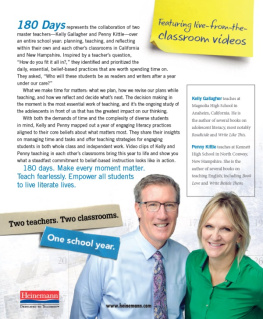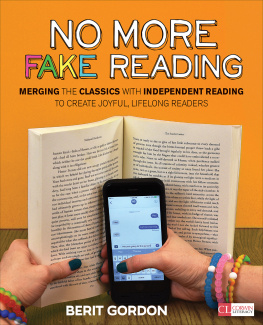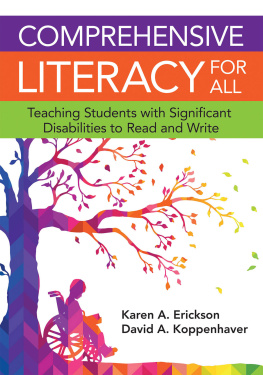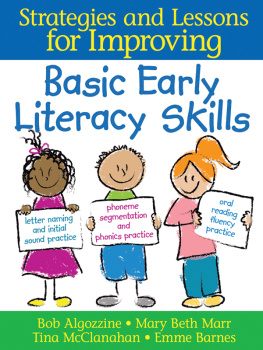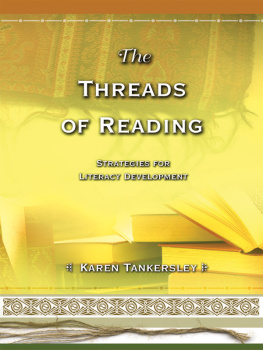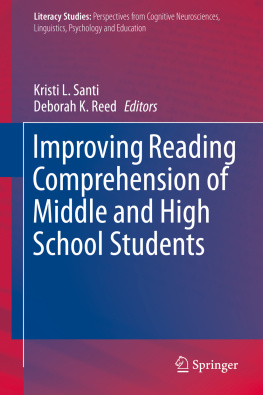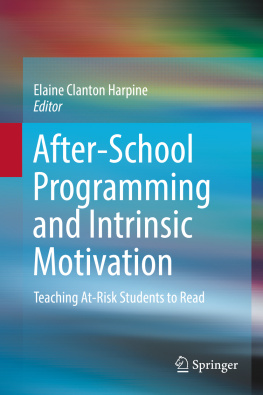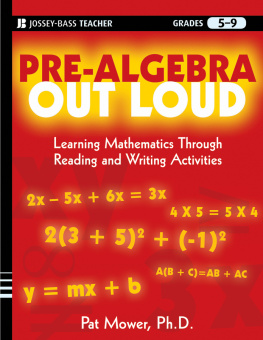APPENDIXES
Appendix A
The Three Commandments of Developing a Classroom Library
lists 101 books every junior and senior high school classroom should have. When considering the titles on these lists, thou shalt keep in mind the Three Commandments of Classroom Libraries.
Commandment 1: Thou Shalt Realize That Appropriateness Is Relative
Walk into a public library, find the adolescent literature section, put on a blindfold, and select one book at random. I can guarantee you that there is a parent out there who will object to that book, regardless of what title you have chosen. Parents views about what their children can read vary widely, and as teachers, we need to be sensitive to this. One parent of an eighth grader might encourage her son to read Stephen King, while another might call the school to complain when Junior comes home with It from your classroom library.
For example, one year I taught seniors first period and freshmen second period. This required a rather drastic cognitive shift in my brain between 9:00 and 9:05 A.M. It was almost like teaching at two different schools (or, at times, like two different planets!). As a result, my classroom library, which consists of 2,500 books, has a wide range of appropriateness. There are books on my shelves that I want seniors to read that may not be appropriate for some of my freshmen. In essence, my classroom is no different than a public library.
In order to avoid problems with parents, I send a letter home with the students explaining the concept of a classroom library (see Appendix F). Students must receive permission from their parents to gain access to the classroom librarysort of a classroom library card, if you will. I explain to parents that my classroom library, like any library, has a range of appropriateness, and that, as parents, they should be aware of what their children are reading. I also have parents sign their students reading log weekly. These precautionary moves head off most problems.
Commandment 2: Thou Shalt Recognize That Classroom Library Book Loss Is Unavoidable and Is Sometimes a Good Thing
If you have interesting books, kids will read them. If you have interesting books, you will lose some of them. There are a lot of worse things that can happen to teachers than students taking books and wanting to keep them.
However, lets be realistic. I do not know a single teacher who is independently wealthy, so we must take steps to stem our losses of good books. Here are some suggestions to keep your classroom library well stocked at relatively little or no cost:
Create a checkout system, preferably student-operated, to track your books. When students check out a book from my library, they take a small index card and write their name, the name of the book, and the date on the card. They do not give me the card; rather, each period has a designated book administrator (a teacher-aide or reliable student). I have enough to do without chasing books all day. The book administrator files the card in a card box alphabetically. Every two weeks the cards are pulled and the administrator checks to see who still has books out, whether they are still reading them, and who will be returning books soon. The book administrator also manages waiting lists for specific books. Some teachers in my school district use handheld pen bar code readers as a way of tracking their classroom library books.
Create a stamp to identify your books. I had a stamp made at a stationery store that reads, Please return this book to Mr. Gallagher, room 7, Magnolia High School. I stamp the title page and the side of the pages of each book. This $10 investment has paid off many times by the number of lost books that are returned to me every year.
Conduct a once-a-year book drive to replenish your library. Make it a competition between classes.
Ask students to identify their favorite books and donate them. I have every graduating senior donate a book before leaving the school. I ask them to choose the books they most enjoyed reading in high school. I created a sticker that includes the schools insignia and room for students to write their name and a brief personal message (see Appendix D). Students like the idea of leaving a little bit of their reading legacies behind for future students to enjoy. Though I do this with seniors, it could certainly be done at any grade level.
Write local businesses, explaining your need for books. One local business I contacted ran an employee book drive that netted 500 books for my school.
Contact your local library and ask if they ever sell books. Twice a year my local library has a blow-out sale where one can purchase four books for $1. Garage sales are a good source as well, as are local Goodwill and Salvation Army stores.
Earn credit toward books by having students participate in book clubs. My students purchase books monthly from Scholastic, which offers high-interest reading titles at reasonable prices. For every dollar my students spend, I earn one point, which goes toward free books at the end of the year. For information on the Scholastic program, call 1-800-724-6527 or contact them on the Web at Scholastic.com.
Ask your doctor and dentist to keep old magazines for you. Stop by once a month and pick them up.
Commandment 3: Thou Shalt Understand That in a Classroom Library, Books Need to Be Marketed
Jim Trelease is right when he says that we can all learn from the way Barnes and Noble markets their books inside their stores. Their sales pitch is evident from the moment you walk in the door. Their books are on display, nicely lit, with the covers, not the spines, facing you. In every one of their sectionsnew fiction, staff recommendations, best-sellersthe books are facing you, enticing you to browse.
Does the displaying of books really make a difference? At the Lafayette Public Library in Colorado, librarians conducted their own experiment. They purchased two copies of each of 182 adult fiction titles and 398 nonfiction titles. All books purchased were at least a year old. For each title, one of the copies was displayed and the other one was shelved. The library had a checkout period of three weeks, with a single renewal of an additional three weeks. The results? Of the 182 fiction titles, display copies were checked out 348 times, compared to 180 times for shelf copies. That is an increase of 96 percent for display copies. Of the 398 nonfiction titles, 382 display copies were checked out, compared to 306 shelf copies. That is an increase of 25 percent for display copies. Simply displaying the books raised the circulation significantly.
If we want to entice our students to read, we must display our classroom library books. Here are some marketing ideas:
Hang heavy-duty wire clotheslines across your room above the heads of the students. Using wooden clothespins, hang your best books so they are floating just above your students throughout your classroom.
Purchase inexpensive plastic rain gutters from a hardware store. Affix them to the walls of your classroom and set books in them so the covers can be seen.
Once a week, line five or six books, face out, on your chalk trays. Pick them thematically and give brief book talks.
Prior to class, place one interesting book on every students desk. Pick a wide range of genres. Have students read each book for two minutes, then rotate the books.
Keeping these three commandments in mind will increase the effectiveness of your classroom library.
Appendix B
101 Books Every Classroom Library Should Have
101 Books for Junior High


